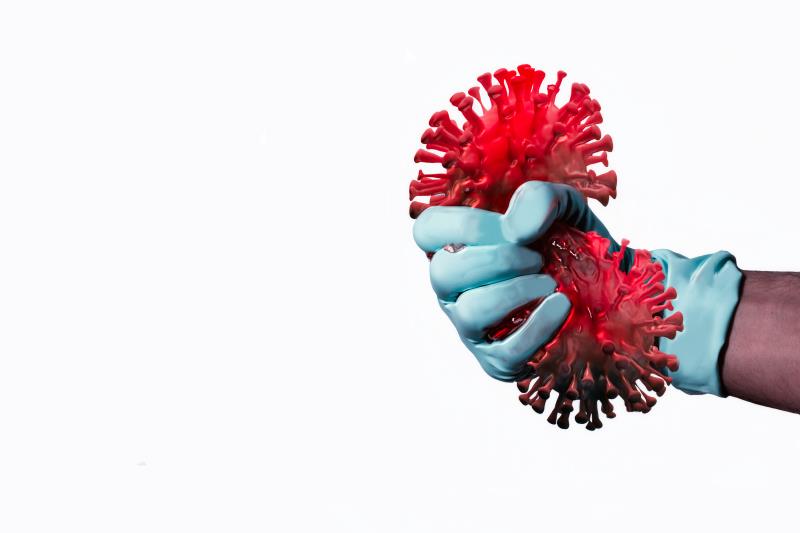Case series show anakinra potential in severe COVID-19 patients with sHLH





A small case series reflected the therapeutic potential of the interleukin (IL)-1 receptor antagonist anakinra in patients with severe COVID-19 who have developed secondary haemophagocytic lymphohistocytosis (sHLH).
“By end of treatment (EOT), intensive care unit (ICU) patients had less need for vasopressors, significantly improved respiratory function, and lower HScore*,” said the researchers.
“[Our findings] argue that … anakinra may be a viable treatment in severe COVID-19 with sHLH, supporting larger clinical studies to validate this concept,” said senior author Professor Evangelos Giamarellos-Bourboulis from the National and Kapodistrian University of Athens in Greece.
Eight patients (n=7 from Greece [100 percent male] and 1 from the Netherlands [non-ICU case]) received salvage treatment with anakinra based on HScore-diagnosed sHLH (≥169). [Cell Host Microbe 2020;doi:10.1016/j.chom.2020.05.007]
Greek cohort
IV anakinra 200 mg was administered Q8H for 7 days after initiation of mechanical ventilation (MV). Patients had serious comorbidities (eg, coronary heart disease, hypertension). They were also receiving hydroxychloroquine, azithromycin, and broad-spectrum antibiotics.
By EOT, five had reductions in lung infiltrates, accompanied by a substantial increase in pO2/FiO2 ratio** (from 15 percent to 117 percent), signifying improvement in respiratory function. This increase was seen in all patients 2 days later.
Although three died, the mortality rate was lower than historical data on sHLH in sepsis, noted the researchers. [BMC Med 2017;15:172; Crit Care Med 2016;44:275-281]
The Dutch case
This 71-year-old female patient was hospitalized 14 days after her third chemo cycle for recurrent ethmoidal adenoid cystic carcinoma. She was also on hydroxychloroquine for rheumatoid arthritis. IV anakinra QD (300 mg for 4 days, followed by 100 mg) was given at day 9 of hospitalization due to clinical deterioration with increasing oxygen demand.
Within 24 hours, clinical improvements were seen, given the reductions in oxygen need and sHLH blood parameters. HScore dropped from 198 to 71 points. Patient was discharged 9 days after anakinra initiation.
The most alarming COVID-19 complication is severe respiratory failure leading to MV, given the high mortality rates. [N Engl J Med 2020;382:2012-2022; Lancet 2020;395:507-513] “[This case shows] that anakinra in [COVID-19] patients with features of sHLH may prevent progression of respiratory failure and the need for MV … [This also] generates consideration for an early time window before the need for MV where immunomodulation may benefit,” said the researchers.
Growing evidence
These findings come on the heels of an Italian study demonstrating the potential of anakinra in COVID-19. [Lancet Rheumatol 2020;doi.org/10.1016/ S2665-9913(20)30127-2] A retrospective analysis also showed lower mortality rates with anakinra vs its comparator. [Lancet Rheumatol 2020; 2:e325-e331] “These patients were … not under MV and had lower ferritin levels. Although HScore was not a criterion for treatment, [the retrospective study] supports the results of our case series,” they pointed out.
Immunomodulation remains a promising approach in managing severe COVID-19 as it aims to mitigate the exaggerated host inflammatory response, the investigators noted. Larger randomized, placebo-controlled trials are thus warranted to ascertain the efficacy of anti-IL-1 therapy in this setting and to better understand the survival benefit of anakinra, they added.